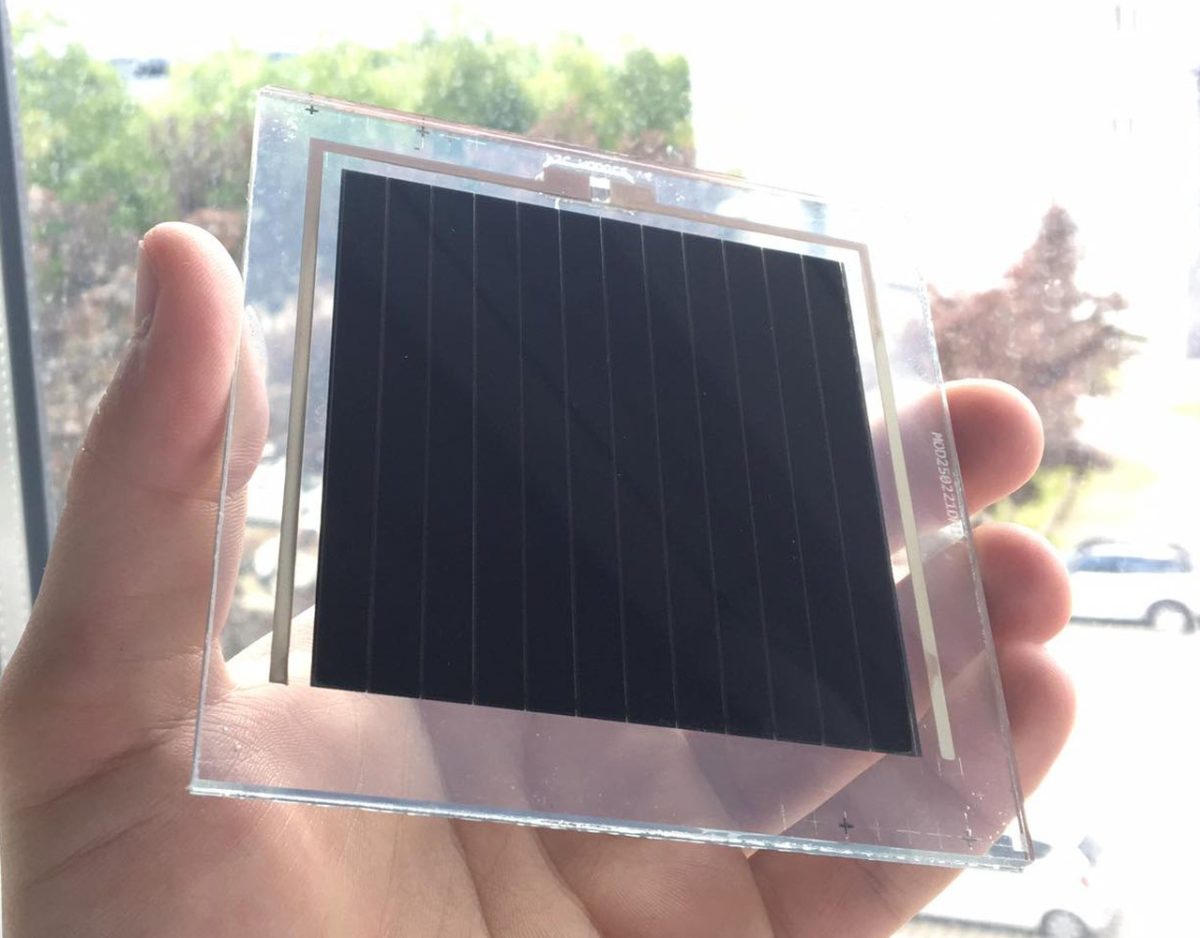Welcome to our exciting blog on solar panel efficiency breakthroughs! Researchers and scientists in Australia are at the forefront of the quest for ultimate solar panel efficiency. With ongoing research and development, various institutions and organizations are continuously exploring new materials, designs, and manufacturing processes to maximize solar panel performance. Here are some of the most interesting solar innovations we have gathered for you:
Photo Credit: Fraunhofer ISE
Perovskite Solar Cells – A Bright Future
Perovskite solar cells have emerged as a promising technology with tremendous potential for revolutionizing solar panel efficiency. These cells utilize a unique crystal structure that enables efficient absorption of sunlight. Key advancements in perovskite solar cell research in Australia include:
Stability and Durability
Researchers are focused on improving the stability and long-term performance of perovskite solar cells, addressing challenges related to moisture, heat, and light exposure. Encapsulation techniques and protective layers are being developed to enhance their durability.
Upscaling Production
Efforts are underway to scale up the production of perovskite solar cells, making them more commercially viable. Researchers aim to develop reliable and cost-effective manufacturing processes that can be integrated into existing solar panel production lines.
Tandem Configurations
Combining perovskite solar cells with traditional silicon-based solar cells in a tandem configuration shows great promise. This approach harnesses the complementary properties of both materials, maximizing energy capture and improving overall efficiency.
Photo Credit: Fieldsken Ken Fields, Wikimedia Commons
Thin-Film Solar Panels – Efficiency in a Sleek Package
Thin-film solar panels offer a lightweight, flexible, and aesthetically appealing alternative to traditional silicon-based panels. In Australia, advancements in thin-film technology focus on:
Improved Efficiency
Researchers are developing novel materials and manufacturing processes to increase the efficiency of thin-film solar panels. This involves enhancing light absorption, minimizing energy losses, and improving electron transport within the thin-film layers.
Durability and Reliability
Ensuring the long-term performance and durability of thin-film panels is a key research area. Protective coatings and barrier technologies are being explored to enhance their resistance to environmental factors such as moisture, UV radiation, and temperature variations.
Building-Integrated Solutions
Thin-film solar panels offer greater design flexibility, enabling integration into building materials such as windows, facades, and roofing materials. This opens up exciting possibilities for seamlessly incorporating solar power generation into the built environment.
Photo Credit: PV Magazine Australia
Concentrated Solar Power (CSP) – Harnessing the Sun’s Intensity
Concentrated solar power (CSP) technologies concentrate sunlight onto a smaller area, significantly increasing energy capture and efficiency. In Australia, notable advancements in CSP include:
Advanced Solar Thermal Systems
Research is focused on developing advanced solar thermal systems that utilize mirrors or lenses to concentrate sunlight onto a receiver. This concentrated heat can be used to generate electricity or provide heat for industrial processes.
Hybrid Approaches
Integration of CSP systems with other renewable energy technologies, such as thermal energy storage or combined heat and power systems, is being explored. These hybrid approaches aim to enhance overall system efficiency and improve the dispatchability of solar power.
High-Temperature Applications
Researchers are investigating high-temperature CSP applications, such as solar hydrogen production or solar desalination. These applications leverage the intense heat generated by concentrated solar systems to address pressing energy and water challenges.
Photo Credit: Amazon
Solar Tracking Systems – Optimizing Sunlight Capture
Solar tracking systems are gaining popularity in Australia to maximize the efficiency of solar panels by dynamically adjusting their orientation. Key developments in solar tracking technology include:
Dual-Axis Tracking
Advanced dual-axis tracking systems precisely follow the sun’s movement in both horizontal and vertical directions. This ensures that solar panels are always positioned optimally to receive direct sunlight, significantly increasing energy production.
Intelligent Tracking Algorithms
Smart tracking algorithms are being employed to optimize panel positioning based on real-time weather data, solar irradiance patterns, and other environmental factors. This adaptive tracking approach further enhances overall system efficiency.
Integration with Control Systems
Solar tracking systems are increasingly integrated with advanced control systems and communication networks. This enables remote monitoring, data analysis, and performance optimization for large-scale solar installations.
Australia’s solar industry is abuzz with cutting-edge innovations and breakthroughs in solar panel efficiency. Researchers, scientists, and industry leaders are actively working to enhance materials, designs, and manufacturing processes to unlock the full potential of solar energy. Perovskite solar cells, thin-film panels, concentrated solar power, and solar tracking systems are among the notable areas of advancement. Embracing these innovations will propel the solar wholesaler industry in Australia toward a greener, more efficient, and sustainable future.
Sources:
– Solar Energy Research Institute of Australia (SERIA) – Website: [www.solar-research.org.au]
– Australian National University (ANU) Research – Website: [www.anu.edu.au/research/research-achievements]
– University of New South Wales (UNSW) – Website: [www.unsw.edu.au]
– CSIRO Energy Centre – Website: [www.csiro.au/en/research/energy/solar-thermal]
– Australian Renewable Energy Agency (ARENA) – Website: [www.arena.gov.au]





